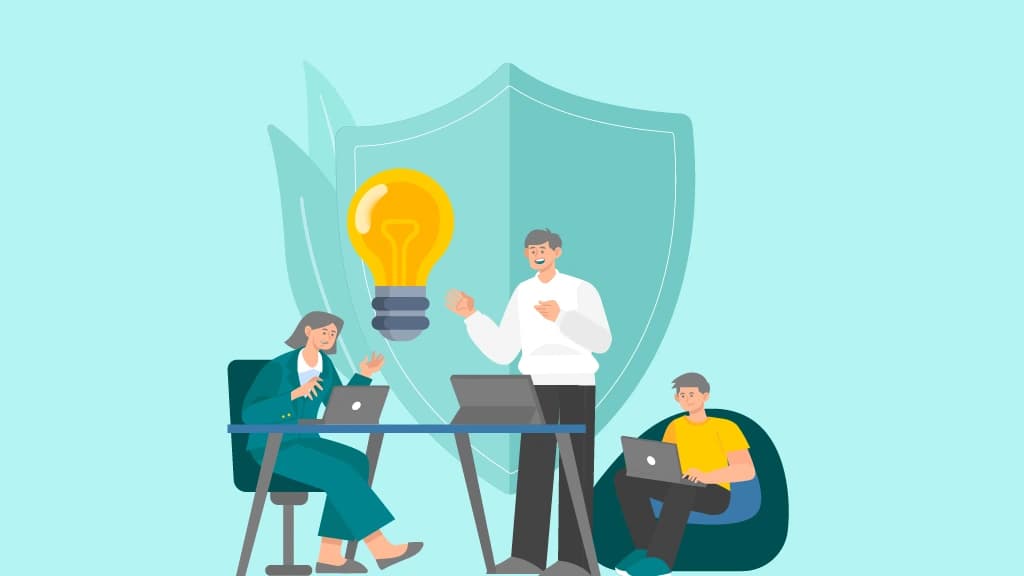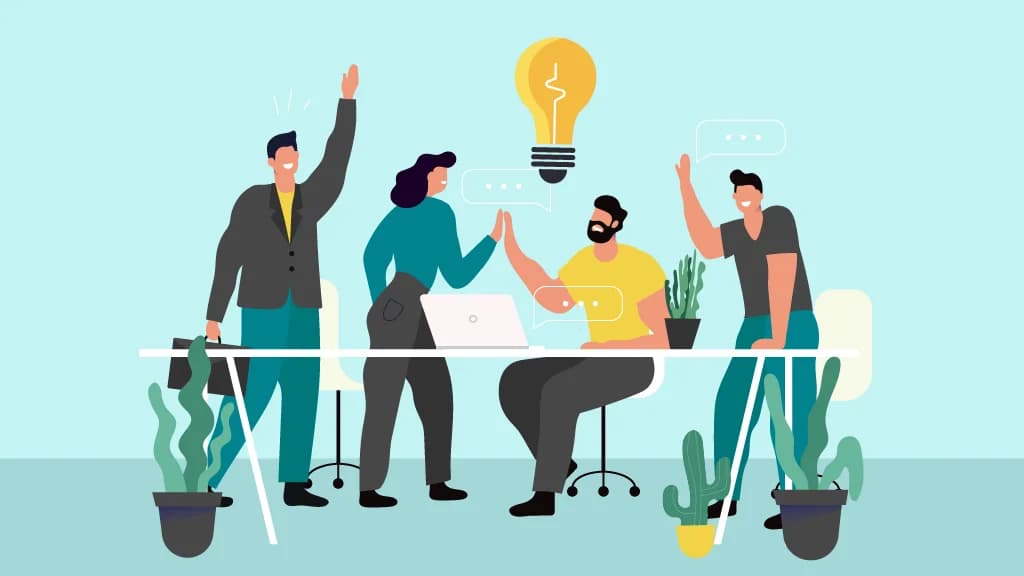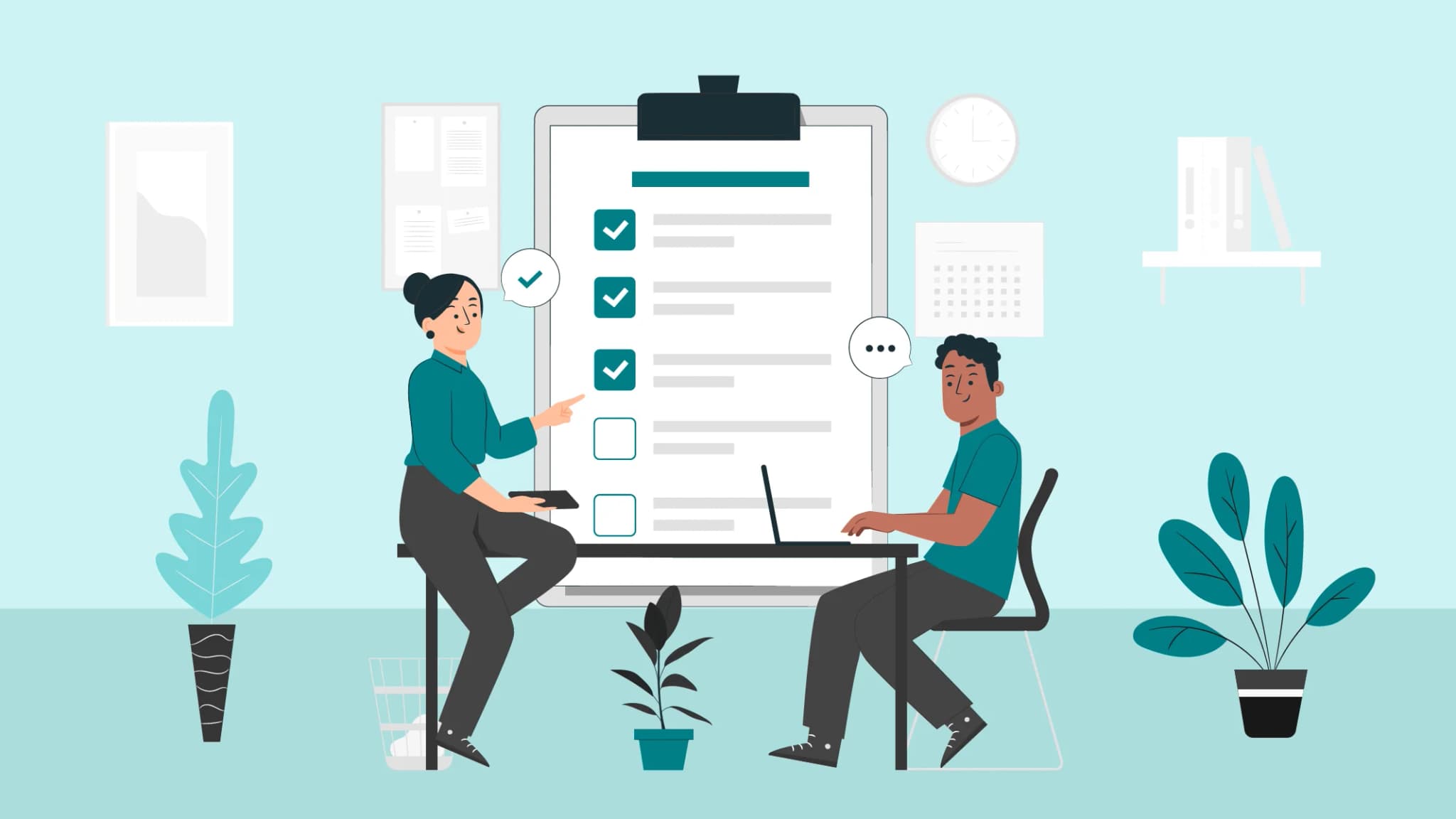
One critical factor that is often overlooked in the fast-paced world today is psychological safety in the workplace. When employees fear they will be evaluated, dismissed, or punished for speaking up, their creative spark dies, and engagement falls. According to research, companies that promote psychological safety at work experience a 76% boost in employee engagement and a 27% decrease in attrition. The message is clear: when individuals feel comfortable, they contribute more, invent more, and stay longer.
However, building psychological safety requires more than an open-door policy and some team-building exercises. It takes persistent work, true leadership, and the correct tools to establish open communication, recognition, and trust. AI-powered engagement platform, AdvantageClub.ai, can help by making feedback and collaboration an everyday practice, not just a checkbox. Here are 15 actionable strategies to architect a psychologically safe workplace.
Strategic AI Interventions for Cultivating Psychological Safety
Psychological safety at the workplace means creating an environment where employees trust that their voices matter, their efforts are valued, and their growth is supported. While leadership plays an important role in establishing this foundation, AI-powered tools can reinforce trust, transparency, and inclusivity in ways that were previously difficult to scale.
Category 1: Augmenting Trust through AI-Driven Initiatives
1. Anonymized Sentiment Analysis & Data-Driven Action Planning: Speaking up can feel risky when employees are concerned about the consequences of providing honest feedback. AI-powered pulse surveys eliminate that anxiety. They collect anonymous feedback, allowing employees to communicate their issues without trepidation.
2. Personalized Reward Optimization & Adaptive Recognition Protocols: A one-size-fits-all approach to recognition rarely feels personal or meaningful. AI elevates employee recognition programs by tailoring rewards to individual preferences—whether it’s a public shoutout, a professional development opportunity, or a personalized perk. With AI-driven adaptive recognition, organizations can ensure that employees feel truly seen and valued, strengthening their connection to the workplace.
3. Decentralized Recognition Frameworks & Peer-Validated Metrics: Hierarchical protocols frequently confine acknowledgment to top-down approval, resulting in many contributions going unappreciated. AI transforms the game by offering peer-to-peer recognition, allowing coworkers to celebrate one another’s accomplishments in real time. By democratizing appreciation through data-backed recognition platforms, companies encourage a culture where acknowledgment flows in all directions, not just from leadership.
4. Algorithmic Equity in Incentive Distribution & Data-Driven Meritocracy: Perceived bias in promotions and rewards can destroy psychological safety. AI eliminates subjectivity. It ensures that rewards and opportunities are provided equitably, using clear, performance-based criteria. With data-driven meritocracy, employees can be confident that their contributions will be duly rewarded.
Category 2: Addressing Toxic Organizational Culture Indicators with AI
5. Transparent Performance Analytics & Data-Enabled Autonomy: Micromanagement destroys trust. AI-generated performance insights allow management to focus on empowering workers rather than controlling them. Advantage Pulse allows managers to stand back and trust their people by delivering clear, objective performance statistics, enabling autonomy while maintaining accountability.
6. Gamified Resilience Building & Incentive Programs: Fear of failure often stifles innovation and creativity. AI-driven gamification challenges help shift workplace culture from fear to growth by rewarding experimentation, problem-solving, and resilience. By making learning engaging and rewarding, employees feel encouraged to take risks, learn from mistakes, and continuously improve.
7. Virtual Community Engagement & Network Optimization: Feeling disconnected from coworkers may undermine psychological safety. AI-powered virtual engagement solutions help to break down barriers by promoting team-building activities and maximizing workplace networks. These solutions, whether through intelligent matchmaking for mentorship, collaboration possibilities, or virtual events, guarantee that employees feel connected and supported regardless of where they work.
8. Inclusive Decision Support Systems & Stakeholder Feedback: Decisions made in isolation can alienate employees and undermine trust. AI-powered decision support systems combine multiple employee perspectives, allowing leaders to make more inclusive, well-rounded decisions. AI enables leaders to develop policies and projects that accurately reflect the needs of the workforce.
Category 3: Addressing Employee Emotional and Psychological Needs Through AI
9. Proactive Burnout Mitigation & Wellness Program Integration: Burnout doesn’t happen overnight—it creeps in when workloads pile up, deadlines become unmanageable, and employees feel like they have no control. AI-powered workload monitoring can flag early warning signs of burnout, helping managers redistribute tasks before employees hit their breaking point. Paired with personalized wellness programs like Advantage Wellness, AI can recommend stress-reducing activities, mental health resources, and work-life balance strategies, ensuring that well-being stays a top priority.
10. Personalized Engagement Strategies & EX Framework: While some employees thrive on public recognition, others prefer individual feedback or opportunities for professional development. AI allows individualized engagement approaches, allowing organizations to adjust rewards, collaboration opportunities, and engagement activities based on individual preferences.
11. Real-Time Performance Feedback & Expectation Clarification: Nothing creates more stress at work than unclear expectations. If employees don’t know what’s expected of them or where they stand, frustration builds, and productivity dips. AI-driven real-time feedback systems provide clear, continuous performance updates, helping employees stay aligned with goals while reducing anxiety about performance reviews. With instant feedback loops, employees always know where they excel and where they can improve—without the uncertainty of waiting for formal evaluations.
12. Enhanced Leadership Transparency & Communication Protocols: Trust in leadership is crucial for psychological safety, but it’s easily lost when communication is inconsistent or unclear. AI-enhanced sentiment analysis enables management to assess employee morale, uncover problems, and handle workplace issues before they worsen. With real-time updates and individualized communication tactics, AI ensures that leadership is transparent, responsive, and aligned with employee requirements, promoting a culture of trust and inclusion.
Category 4: Navigating Organizational Change and Promoting Inclusion with AI
13. Change Management Simulation & Uncertainty Reduction Protocols: Fear of the unknown is one of the biggest barriers to change. AI may simulate many scenarios, providing employees with a better understanding of how changes would affect their roles. AI minimizes uncertainty by providing data-driven insights and step-by-step assistance, making transitions feel more structured and manageable.
14. Hyper-Personalized EX Design & Customization Strategies: One-size-fits-all workplace experiences don’t work. AI enables organizations to customize employee experiences (EX) at an individual level, aligning tasks, learning opportunities, and rewards with each person’s strengths, goals, and aspirations. Employees who receive hyper-personalized engagement feel more engaged in their work and valued for their unique contributions.
15. Leadership Development & Psychological Safety Analytics: Leaders have an important role in building company culture, but even the best managers have blind spots. AI-powered psychological safety analytics deliver real-time data on employee sentiment, engagement, and team dynamics. This allows management to identify potential areas for development. Managers who receive individualized leadership development advice can continuously improve their approach, increase psychological safety, and foster a more inclusive, high-performing environment.
Psychological Safety—The True Retention Currency
Psychological safety at work has a significant effect on employee retention, innovation, and general workplace well-being. Employees are more engaged, productive, and loyal to their business when they feel comfortable expressing their ideas, asking questions, or admitting mistakes without fear of being judged or rebuked.
Annual surveys, sporadic recognition programs, and top-down communication are all examples of traditional engagement strategies that frequently fall short. They lack customization, rely on delayed feedback, and operate under rigid systems that do not respond to employees’ immediate needs. AI-powered solutions, Advantage Recognition, bridges these gaps by offering real-time, data-driven recognition, fostering an environment of trust and openness.
Why Psychological Safety Matters: The Numbers Speak for Themselves
Key Statistics:
- Employees who are better off with things like psychological safety can perform up to 5 times better, which leads to increased innovation. When employees feel safe speaking up, they share bold ideas without fear of being shut down. That’s how innovation thrives.
- According to research, psychological safety at work leads to 74% reduced stress. A psychologically safe workplace isn’t just productive—it’s healthier, too. Less stress means fewer burnout cases, better mental well-being, and higher job satisfaction.
- Creating a psychologically comfortable atmosphere is essential for improving teamwork and maximizing the potential of diversity. The deep dive into team dynamics proved that a culture of trust and inclusion directly translates to higher efficiency, better decision-making, and stronger collaboration.
- 92% of employees believe it is extremely (57%) or very (35%) important to work for a company that values their emotional and psychological well-being. Employees don’t just want competitive salaries and benefits—they want to feel understood, valued, and respected. AI helps leaders gauge sentiment, identify concerns, and take proactive steps to foster empathy at scale.
How to Build Psychological Safety in Collaboration
Great collaboration doesn’t happen by accident, it flourishes when employees feel safe expressing ideas, taking chances, and providing honest feedback without fear of judgment or repercussions. AI-powered engagement systems, AdvantageClub.ai, plays an important role in establishing this trust. The platform provides regular recognition, data-driven insights, and inclusive feedback mechanisms that promote psychological safety in teams.
Step 1: Establish a Culture of Transparent Recognition
One of the easiest ways to undermine trust in teamwork is when employees feel their contributions are overlooked. If hard work goes unnoticed, motivation drops, and disengagement sets in. AI-powered peer-to-peer recognition changes that by enabling employees to celebrate each other’s contributions in real time. Gallup survey reveals employees who truly think that they receive authentic acknowledgment are four times more inclined to feel connected to their company’s culture than those who disagree.
AI ensures recognition is fair, timely, and personalized, boosting morale and reinforcing a culture where people feel valued. With AdvantageClub.ai, organizations can move away from sporadic or manager-dependent recognition and create a culture of appreciation that strengthens collaboration.
Step 2: Enable Safe, AI-Powered Feedback Loops
Honest feedback fuels great teamwork, but employees often hesitate to speak up—especially when criticism might be met with backlash. AI-powered anonymous pulse surveys and sentiment analysis provide a safe environment for employees to communicate their concerns.
AI recognizes emerging trends in employee sentiment, enabling HR and leadership to handle potential concerns before they escalate. Real-time input on collaborative dynamics allows for immediate course modifications, eliminating the need for annual surveys.
Step 3: Gamify Collaborative Problem-Solving
Traditional performance management overemphasizes individual accomplishment, which might discourage teamwork. However, when team achievements are recognized, teamwork grows. AI-powered gamification supports this by rewarding teams for collective problem-solving and goal achievement.
AI can encourage teamwork by awarding prizes, office superlatives, badges, company swag, or acknowledgment for collaborative successes rather than individual contributions.
Step 4: Encourage Psychological Ownership Through AI-Driven Personalization
One-size-fits-all recognition doesn’t work. Employees disengage when they feel like just another number in the system. AI-driven customization guarantees that employees receive recognition in a way that is meaningful to them.
AI-powered solutions, such as AdvantageClub.ai, customize awards and engagement techniques, making recognition more personal for each user.
Step 5: Reinforce a Bias-Free and Inclusive Work Environment
Nothing stifles collaboration faster than bias in promotions, rewards, and recognition. When employees feel decisions are unfair or politically driven, they stop speaking up. AI helps by ensuring that corporate recognition awards are based on data, not subjective opinions.
AI tracks objective performance metrics, ensuring that every employee—regardless of background—has an equal opportunity to be recognized and rewarded.
Step 6: Make Psychological Safety a Leadership KPI
Leaders set the tone for collaboration, but many unintentionally create environments where employees hesitate to contribute. AI-driven insights help leaders track psychological safety levels in their teams and provide personalized coaching recommendations.
AI can highlight patterns—such as a drop in engagement or increasing employee concerns—helping leaders address issues before they turn into major problems. By integrating psychological safety into leadership KPIs, organizations can ensure that collaboration and trust remain a top priority.
Psychological Safety: AI Wins
Traditional Psychological Safety Strategies (Their Limits)
Many organizations rely on familiar approaches to foster psychological safety:
- Leadership training & open-door policies : Great in theory, but often inconsistently applied, leaving employees unsure if they can truly speak up.
- Annual employee surveys : These frequently lack actionability and offer a snapshot in time, ignoring ongoing issues.
- HR-led engagement initiatives: While well-intentioned, they are reactive rather than proactive in addressing underlying issues.
What is the toughest challenge? These methods do not scale. Psychological safety isn’t something you check off a list—it requires continuous reinforcement, fairness, and a system that employees trust.
Why AI-Driven Psychological Safety Works Better
- Scalability: AI can analyze thousands of recognition interactions in real-time, flagging gaps in engagement and team morale.
- Bias Reduction: AI ensures that recognition and feedback are fair and data-driven, reducing favoritism and unconscious bias.
- Continuous Feedback Loop: Instead of relying on annual check-ins, AI-powered tools keep engagement ongoing and actionable.
- Hyper-Personalization: Employees receive tailored rewards, recognition, and feedback based on their motivations and preferences.
According to MIT Sloan research , 85% of those who indicated that their company gets benefit from AI claimed they get value from it as well. That’s because AI isn’t just an efficiency tool—it’s a culture enhancer, reinforcing psychological safety every day.
The AI Edge: Transforming Recognition
Psychological safety thrives when recognition is consistent, unbiased, and embedded into daily operations. But how can organizations build this into their culture? AI provides a structured playbook to make psychological safety a reality.
How AI Helps Beyond Traditional Engagement Methods
- Beyond Surveys: AI-powered real-time listening tools detect trends in employee sentiment, allowing organizations to act proactively instead of reactively.
- Beyond Top-Down Leadership: AI empowers peer-to-peer recognition, making appreciation a collective effort rather than solely leadership-driven.
- Beyond Generic Rewards: AI ensures incentives are customized and meaningful so employees feel truly valued rather than just another number.
The Future of Work is Built on Psychological Safety
Psychological safety in the workplace is not a luxury. Organizations that develop open communication, trust, and inclusivity empower employees to contribute their best ideas without fear. By applying psychological safety examples and strategies, businesses can create environments where innovation thrives; collaboration strengthens, and productivity soars. The future of work depends on how well we build psychological safety at work—one conversation, one policy, and one leader at a time.






